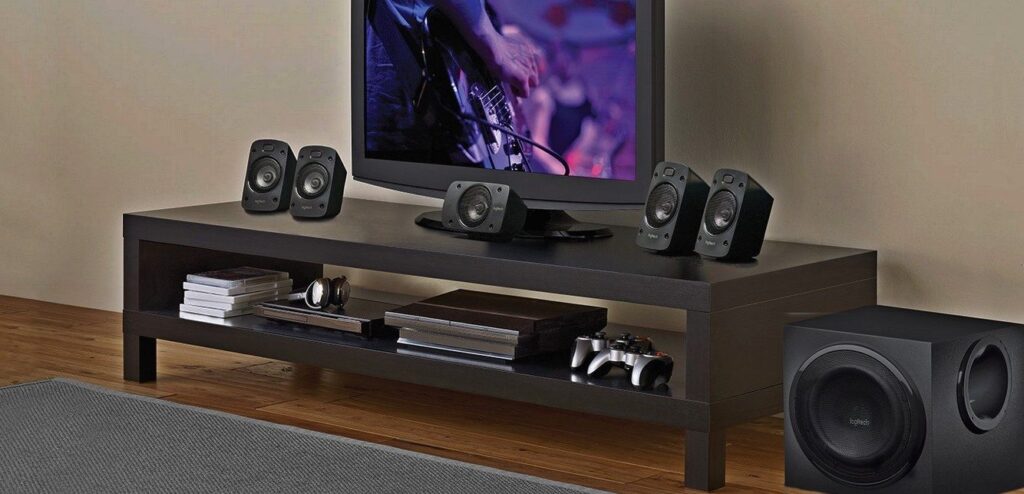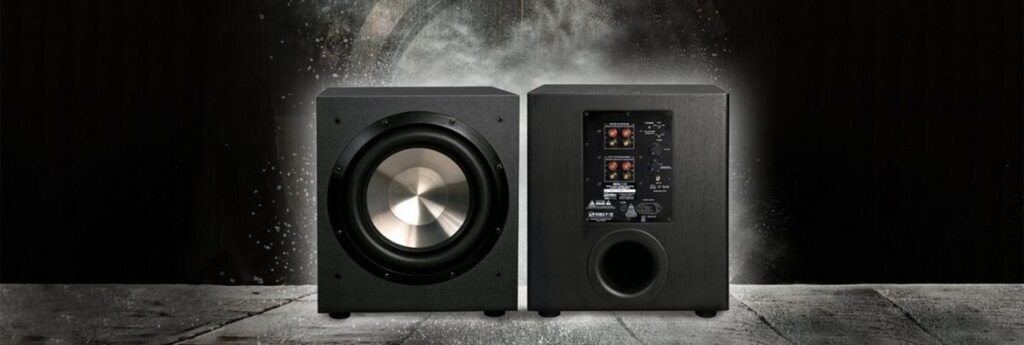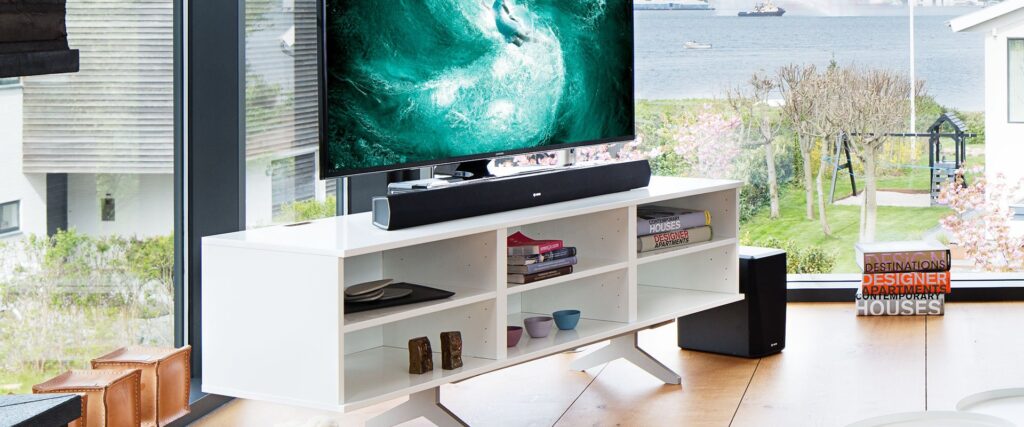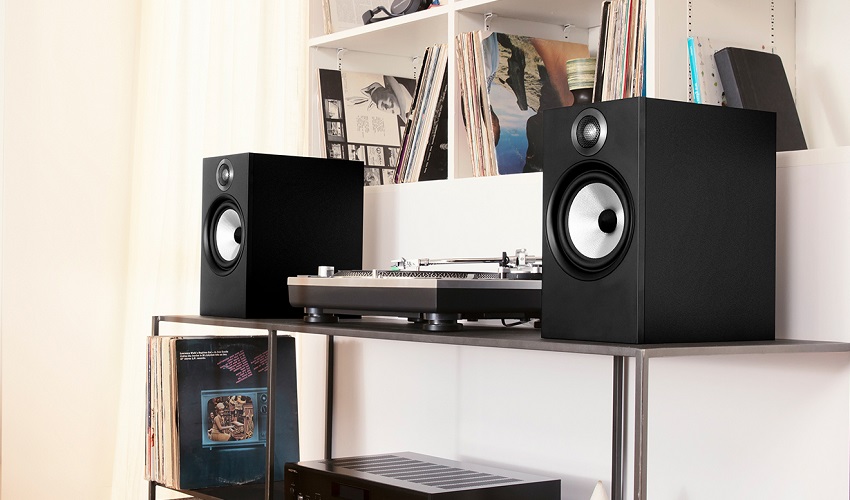If you’re putting together a home theater system – gaming console, widescreen television, and a brand-new set of surround sound speakers – you’ll want to pay special attention to the A/V receiver that will sit in its center. The best A/V receiver under $500 may look less exciting than the other components of your home theater, but it takes care of the most important task of all: re-routing the audio and video signals coming into the speakers they are meant to be played on and to the television. Even more important, the A/V receiver is responsible for improving the signal quality along the way so that you get the best sound and video quality out of the rest of your system.
To find the best A/V receiver under $500, we considered a number of features that affect the quality of sound that is routed out to your speakers. First, we looked at the number of channels, since this determines how many speakers you can add to your receiver. We also considered the power of the amplifier within the receiver, which plays a key role in determining what speakers you will use with your receiver. Finally, we looked at HDMI ports, which allow you to hook up multiple A/V devices like gaming consoles and televisions to your receiver, and special features like Bluetooth. We spent 35 hours reading through customer reviews and technical specifications for the most popular and well-regarded A/V receivers under $500. The result is a list of the 10 best A/V receivers under $500 on the market today, where the Onkyo TX-SR373 deserved our top spot.
More features: Dolby TrueHD and DTS-HD Master Audio decoding, Qualcomm aptX Audio, Bluetooth
Users loved this powerful and technologically advanced A/V receiver from Onkyo, one of the premier names in A/V receivers. Although the receiver only provides five channels for speakers, it includes two subwoofer ports so that you can arrange two small subwoofers to fill your room with sound. The 80-watt rated power output and 155-watt maximum output are on par with comparable receivers, plus the receiver supports both Dolby TrueHD and DTS-HD Master Audio codecs to produce the sound with which users were very impressed.
Like most other receivers in this price range, this unit is capable of connecting to your devices via Bluetooth but hosts only four HDMI in ports. That said, the HDMI out port is capable of 4K video and produces particularly deep colors. In addition, the receiver is built with Qualcomm aptX for streaming from devices that support this software.
Users also appreciated the AccuEQ system built into the receiver, which accounts for your room acoustics to help you position speakers and find optimal output levels and crossover frequencies to get the perfect sound. Setup is also made easier by the clearly labeled input and output ports on the rear of the unit, which make it easier for first time A/V receivers to set up their home theater system correctly. Unfortunately, users also noted that the display on the front of the receiver is relatively unfriendly and difficult to parse without consulting the manual.
More features: Reflex Optimizer, Multi-Room Audio, Bluetooth
This powerful A/V receiver from Pioneer is designed foremost as a 5.2.1 system, to be used with height speakers that work to give it an incredible surround sound effect. Users loved the overall sound quality, thanks in part to the MCACC room acoustic calibration technology that helps optimize the sound. Also, the receiver features Pioneer’s Reflex Optimizer software, which takes the calibration one step further to produce an even more enveloping surround sound for your home theater system. The receiver itself is capable of 100 watts per channel of sustained output and 170 watts per channel maximum output, making it the most powerful receiver we reviewed for under $500.
The receiver boasts whopping seven HDMI input ports as well as two HDMI output ports, giving you a huge range of options when it comes to connecting devices and televisions. Also, you can connect devices either by Bluetooth or via WiFi, which many users adapted to use Apple AirPlay with this receiver. The receiver also has Chromecast built in, although it is worth noting that Chromecast can only be used to play music and not to stream video.
The main problem that users had with this receiver was reliability. Many users found that faulty circuitry or an overloaded motherboard led to this receiver failing within a year of purchasing. While Pioneer offers a relatively short one-year warranty, customers found that Pioneer’s customer service team was difficult to work with even within the warranty period.
More features: Bluetooth
Users were impressed with this five-channel A/V receiver from Yamaha when installing it into a small home theater. The rated output of 70 watts per channel may not be particularly high, but the maximum dynamic output power of 145 watts per channel allows you to crank the volume enough for a moderately sized room. Overall, users felt the sound quality was crisp and clear, in part thanks to the addition of Yamaha’s compressed music enhancer technology, which works similar to the Advanced Music Optimizer from Onkyo to bring out high frequencies that are otherwise lost. This receiver also works very well with low frequencies thanks to Yamaha’s bass enhancer, although the primary limit to your bass remains your subwoofer with this receiver. The YPAO sound optimization program included in the receiver helps you calibrate your receiver and speakers to get the best audio quality from your room acoustics, which users also appreciated.
The receiver is Bluetooth compatible to connect wirelessly to your devices, although it does not support WiFi as comparable receivers often do. Also, there are only four HDMI ports, so it is possible to fill up your ports over time. Users also found that the remote control signal receiver on the A/V receiver is very sensitive and will not pick up signals if it is at all obstructed by cabinetry, which can be quite annoying depending on your home theater setup.
More features: works with Alexa; 17 DSP programs
Packed with advanced technologies that its rivals can only dream of, the Yamaha RX-V683BL AV Receiver is miles ahead of the chasing pack. It can effortlessly create an excellent sound environment, be it in a medium-sized space or a large space. First of all, the unit is Wi-Fi-compatible, which simplifies system connections and allows you to enjoy music streaming services and networked audio. In the absence of a network router, there is a special Wi-Fi direct feature that allows you to directly stream music from your smartphone via the Airplay, AV controller app, etc.
Apart from offering a wide range of network functions like the Bluetooth and wi-fi connectivity, the AV controller app also allows you to control different functions from your tablets, Android phones, iPods, iPads, and iPhones. Just download the app from the Google Play store or the App store, depending on the type of smartphone you use. To put it simply, this app simplifies operation and makes everything incredibly easy. For voice control, the AV receiver is also compatible with Alexa, which you need to buy separately.
Additionally, the unit is compatible with Hybrid Log-Gamma and Dolby Vision, providing smooth tone, incredible contrast and bright, rich colors. The unit also allows you to add as many as nine additional rooms MusicCast, which is nothing short of impressive. There is also an eco-mode, which reduces power consumption by 20 percent or thereabout. In terms of downsides, it only has one, in our opinion. The only minor complaint we have is that it comes with a really cheap and short FM antenna – cheap enough to replace, but cheap enough to have included a better/longer one to begin with.
More features: Bluetooth, Wi-Fi, compatible with Alexa
When it comes to A/V receivers under the $500 price point, it is incredibly hard to beat this receiver from Yamaha, which comes loaded with features. In addition to being Bluetooth compatible to work with gaming consoles and your phone or computer, the receiver has Airplay to work with Apple devices, can connect to Spotify, Tidal, and Deezer music services via your home’s WiFi network, and can even work with Amazon’s Alexa smart devices. If that wasn’t enough to make you want to use this receiver to play your music and shows, this receiver also allows for multi-room audio so that you can play alternative music in a second room or control audio from the same source in up to nine rooms.
Within the context of a broader home theater system, this receiver also performs notably well for the price. The receiver is a seven-channel system with ports for not only one, but two subwoofers, meaning that you can crank the volume and use two subwoofers to fill the room with bass. The rated output power of 80 watts is higher than the power found on many comparable receivers at this price, while the receiver can also put out a maximum 145 watts of power. The video output is also 4K compatible and ready for your upgraded television display.
The only downside to this receiver is that it only has four HDMI ports, which is surprising given the numerous other ways it makes it easy to connect to all of your devices.
More features: dynamic audio amplification, powered Zone 2 speaker outputs and line outputs, Bluetooth
Coming in well under the $500 price point, this A/V receiver from Onkyo produces a surprising amount of volume for your home theater system. Although the receiver is only rated to 80 watts per channel of continuous power, the maximum output power is a whopping 170 watts per channel – although the 10% distortion ratio at maximum power makes this a gain level that you will not want to spend much time at. However, the overall noise in the system is kept down thanks to Onkyo’s dynamic audio amplification technology.
This receiver makes it extremely easy to connect to all of your devices. In addition to hosting six HDMI input ports, the receiver has Bluetooth connectivity and Chromecast built in. It is also compatible with Amazon’s Fire Connect and can connect to your home’s WiFi network to play music from Pandora, Spotify, Amazon Music, and several other streaming services. Moreover, the receiver supports “Zone 2” audio, essentially allowing you to control a set of speakers in another room through a secondary set of line out ports. Gamers also loved this receiver because there is almost no lag between the input signal and the audio or video outputs – an essential feature for gameplay.
Output audio and video quality are both excellent and the key to this receiver for users. The video output supports 4K video, while the audio supports both Dolby Atmos and DTS:X codecs for superior audio quality at this price point.
More features: powerful 5-channel discrete amplifier with Eco Mode, advanced HDMI Videos Section
Denon is a well-respected name in the world of A/V receivers, and this unit is designed for ease of use within a larger home theater system. Note that since the receiver is only a five-channel system and the maximum output wattage is capped at 90 watts per channel – just more than half that of some of the other receivers in this price range – this A/V receiver is best for smaller rooms with relatively low power speakers. That said, the distortion at 90 watts per channel is extremely low compared to other A/V receivers in this class, at 0.7% THD.
The front face of the receiver is extremely intuitive to use, which users who are using an A/V receiver for the first time appreciated greatly. In addition to supporting Bluetooth for connecting your devices wirelessly, the receiver has a USB input on the front that allows you to quickly and easily connect a phone or computer for playing music. Note, however, that scrolling through your music library when using either Bluetooth or the USB input requires a television to be connected to the receiver as a display screen and navigating can be awkwardly slow.
The A/V receiver is equipped with everything you need to handle a 4K signal, including the BT.2020 color gamut for bright and vibrant displays. In addition, the inclusion of five HDMI ports on the rear of the unit makes it easy to hook up all of your devices with room to grow your home theater setup.
More features: Qualcomm aptX Audio, Bluetooth, AccuEQ room acoustic calibration
This inexpensive receiver from Onkyo is beloved by its users, and for a good reason. While the receiver does not boast the WiFi connectivity or streaming services found on more expensive receivers, it excels at playing music. The receiver is capable of sustained 80-watt output per channel and up to 155-watt maximum output per channel, albeit with significant distortion at high gains. The receiver also includes Onkyo’s Advanced Music Optimizer technology, which preserves high frequencies that otherwise fall off on most receivers in this price range. The AccuEQ technology built into the receiver also helps you calibrate this receiver and your speakers to your room’s acoustic properties so that you can get the best sound quality out of your home theater.
What users especially love about this receiver is its two-zone functionality, which allows you to play either the same or two different audio sources in two different rooms simultaneously. You also retain full control over the volume in each room, which makes this an excellent choice for customizing your music choices between two rooms.
The downside to this receiver is that it has only four HDMI ports, which can be limiting when there is no WiFi connectivity or front USB port. In addition, this receiver does not support 4K resolution video or the advanced Dolby video codecs, so the video quality will be severely lacking compared to similar A/V receivers.
More features: Bluetooth, front USB input, synchronized sound with phase control
This inexpensive A/V receiver from Pioneer comes in at well under $500, yet is perfect for a first-time home theater system setup. The five-channel speaker system is capable of outputting 80 watts per channel of continuous power and a maximum of up to 150 watts per channel – on par with A/V receivers that cost hundreds of dollars more. The inclusion of only one subwoofer channel on this unit is not uncommon but does limit the amount of bass that you can put into the room. Users new to home theater systems also appreciated that this receiver comes with MCACC Auto room tuning and synchronized sound with phase control to help you calibrate your home theater system to your room’s acoustics. Numerous customers reported being impressed with the crisp sound that this receiver produces, especially given the budget price. The video quality on this receiver is on par with the sound quality thanks to the inclusion of 4K capability and support for the Dolby Vision codec.
The receiver comes with Bluetooth support to connect wirelessly to your devices as well as a USB port on the front of the receiver box to allow you to connect a phone or computer quickly. However, note that there is no WiFi connectivity or support for music streaming services as found on other A/V receivers under $500, which can be important features for some users. The receiver also includes only four HDMI inputs on the rear, which can be limiting if you use a lot of different devices in your home theater.
More features: IP control capability with the HEOS link, Bluetooth, iOS and Android remote control apps
This A/V receiver from Denon may edge closer to the $500 mark than many of our other top picks, but for the price you get a 7.2-channel home theater receiver with a huge array of features. In terms of power, this receiver is on par with slightly less expensive receivers with 75 watts per channel of continuous power output and 110 watts per channel maximum power output. However, users thoroughly appreciated the addition of a second subwoofer channel on this receiver, which allows your bass to be as surrounding as the rest of your audio in your home theater.
This receiver also boasted one of the widest support systems for multiple devices. In addition to hosting six HDMI input ports on the rear of the unit, the receiver is Bluetooth compatible and has remote control apps for both Apple and Android products. The inclusion of an Android app is particularly noteworthy, since while several receivers under $500 support Apple Airplay, there are very few receivers designed to work seamlessly with Android. Users also loved how easy the controls on the front face of the unit are to use for navigating between the different functions.
The video on this receiver supports Dolby Vision and 4K resolution for ultra-high-definition displays, on par with most of its competitors. However, users noted that the remote control was somewhat flimsy. In addition, although Denon offers a two-year warranty on the receiver, customers reported experiencing serious issues when working with Denon’s customer service team.
Now that you’ve read more about our nine top picks for A/V receivers under $500, how do you choose among them to get the A/V receiver that is right for your home theater system and that is compatible with any speakers and devices that you already have? Our Buying Guide will cover everything you need to know when choosing an A/V receiver, from what to expect at the budget sub-$500 price range, to the meaning of the technical specifications that are used to describe and differentiate A/V receivers, to how to set up your new receiver. In addition, our Frequently Asked Questions Section will answer some of the most commonly questions we get from people who are new to the world of A/V receivers.
In contrast to speakers, where it is difficult to get really good quality under $500, A/V receivers in this price range can be surprisingly solid. The technology in A/V receivers has become cheap enough that most receivers below $500 support the most sought-after features for home theater systems, such as Dolby Atmos and DTS:X, numerous HDMI ports, and Bluetooth.
That said, there are still some important features that can be left off of cheaper A/V receivers, including the ability to output 4K video – which will become increasingly important as more and more videos and games are produced in 4K resolution. In addition, whereas more expensive receivers typically have all the features you could want in a single unit, receivers under $500 typically force you to choose between, for example, supporting multiple rooms and automatic recalibration based on your room acoustics. Notably, there are also few 9-channel receivers available for under $500 for those who wish to add a ton of speakers to a single receiver.
Another critical difference between receivers under $500 and their more expensive counterparts is the output power. Whereas less expensive receivers typically put out 100 watts or less of continuous power, higher-end receivers have much more powerful amplifiers that can in turn support more powerful speakers at their maximum gains.
A/V receivers are often described according to a set of technical specifications that give clues as to the sound quality and compatibility of the receiver with your devices. To make it easier to find the receiver that is right for you, we’ll explain these specifications and why they’re important.
Power, measured in watts, is one of the most important aspects of an A/V receiver but also the hardest to parse since there is no standard way of reporting power among manufacturers. The rated output power describes the wattage – essentially volume – that a receiver can consistently put out to the speakers. This is important because the power of your receiver must be equal to, or even slightly greater than, the output power of your speakers in order to take full advantage of them. Like your speakers, A/V receivers are also rated for a maximum power that can be sustained only briefly, and this too should match or exceed the maximum power of your speakers. An underpowered receiver will not only limit your speakers’ capabilities, but is actually more likely to blow out your speakers than overpowering them with a receiver with a higher wattage.
These days, nearly every device that you will want to connect to your receiver other than the speakers themselves – a television, a gaming console, a computer, and more – use HDMI ports to connect. Therefore, the number of HDMI ports on your receiver is important to consider. You need at least one input port for every device you are planning to connect right now, and it is also a good idea to have one or two extra ports for any devices you might want to add in the future. While most receivers only offer one HDMI output port, the Pioneer VSX-1131 offers a second port that could be used to connect a second television.
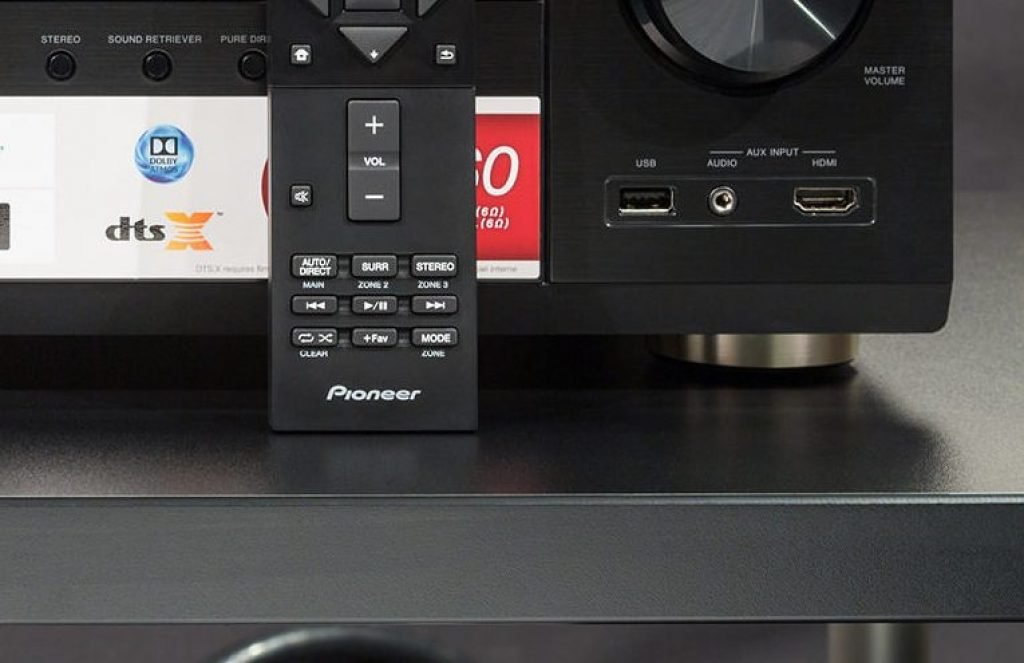
An increasing number of devices are now Bluetooth-compatible, which makes it extraordinarily easy to connect your device to your A/V receiver – if your receiver is itself Bluetooth compatible. While this is not an essential feature to the functioning of your receiver, all of the A/V receivers under $500 that we reviewed are Bluetooth compatible.
Nearly every A/V receiver takes a rectangular, boxy shape, but you’ll need to fit that box in an easily accessible spot in the front of your home theater system. For this reason, it is well worth having a spot in mind and measuring its dimensions before settling on a receiver unit.
There are numerous more ways in which A/V receivers distinguish themselves from one another. A common feature that is nice to have is multi-room audio, which allows you to use a single receiver to play different audio sources in different rooms around your house. If you have a large house and multiple people with different music preferences, consider choosing a receiver like the Pioneer VSX-1131 that has this capability.
In addition, some receivers like the Onkyo TX-SR383 offer AccuEQ room calibration that automatically senses and adapts to your room’s acoustics in order to produce the best sound for your theater. While this is not essential by any means, it can help with improving sound quality.
Finally, it is worth checking whether your A/V receiver is able to support 4K video output, since an increasing number of movies and video games are being produced at 4K resolution.
Even if you do not have a 4K television now, if you want to upgrade your television in the future having a 4K-compatible A/V receiver will mean that you do not need to replace this component of your home theater system at that time as well. The Onkyo TX-SR373 and TX-NR575, Pioneer VSX-532 and VSX-1131, and Denon AVR-S710W all support 4K as well as the updated BT.2020 color gamut that was designed in conjunction with 4K.
Once you have your new A/V receiver on hand, how do you set it up? The first step is finding a new home for your receiver, in a spot where it can get enough air flow to avoid overheating and that speaker wires and HDMI cables can be easily connected to it. Once you have this in place, you can use HDMI cables to connect your television via the HDMI out port – most A/V receivers will display an on-screen instruction guide to help you through the rest of the setup process. You can also connect HDMI cables for any cable boxes or gaming devices into the HDMI in ports at this time.
Setting up the speakers requires a long spool of speaker wire – each speaker will be plugged into one of the audio out ports on the back of your receiver, the number of which should correspond to the number of channels that your receiver supports. Also, connect the subwoofer at this time to the subwoofer out port. Once you have your speakers connected and placed around the room where they work best, you can calibrate the system either using the built-in room acoustics calibration software or by carefully moving the speakers around the room while you sit in the primary listening position.
Although competition is fierce between these audio receivers, we feel the overall best A/V receiver on the market today is the Onkyo TX-SR373. It is a 5.2-ch receiver complete with AccuEQ system for calibration of sound, as well as Dolby TrueHD and 4K. The Pioneer VSX-1131 is our second choice, and it’s a 7.2-ch receiver featuring the exclusive sound calibration system of MCACC with the Reflex Optimizer. The Yamaha RX-V383BL is the best basic 5.1-ch receiver, with crisp and clear sound quality due to Advanced Music Optimizer and YPAO sound optimization. Every model from our top picks is worth looking into, and we ensure that you will be content with your decision.


